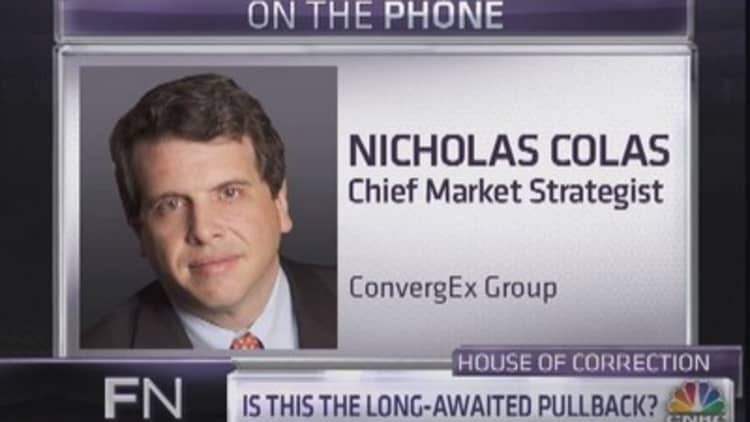
As January comes to a close, many market participants will be tempted to fret about the "January barometer," which holds that stock performance in January predicts the performance over the rest of the year. In a January that has seen stocks slide 3 percent, this could become a concern. But investors would probably do well to ignore this long-standing market meme.
(Read more: Stocks down 4% in January! If history repeats ...)
Proponents of the barometer point to the fact that over the past 35 years, the has followed January's direction 71 percent of the time. However, this statistic is skewed by the fact that it includes January in that full-year performance.
That means that in years like 1987, when the market rose 13 percent in January but finished the year just 2 percent in the green, listening to the January barometer would have yielded a loss of some 10 percent—and yet this year is still counted as a success for the barometer.
Still, even if we merely compare January's performance to the path that stocks beat over the following 11 months, January still appears to predict the S&P's path 66 percent of the time. The problem is that it is much better at "predicting" winning years than losing ones.
Going back to 1979, the S&P rose in 23 out of 35 Januarys. Over the next 11 months, the market consequently rose in 19 of those 23 years that were kicked off by winning Januarys—meaning that a positive January has successfully predicted a winning February-through-December 83 percent of the time.
But in the 12 years when the market fell in January, the market only followed along in four years. That's just a 33 percent success rate.
The reason that positive Januarys prove to be a great barometer, and negative Januarys a terrible one, is the same reason that the "January barometer" appears to exist in the first place: Stocks rise.
"It's Neanderthal statistics," said Mark Dow, a former hedge fund manager who currently writes at the Behavioral Macro blog. "You could say rain in Scotland predicts the money supply in the U.S., but that's just because rain always falls and the money supply always grows. Well, stock markets tend to go up."
"It's one of those rules that traders throw around because we have to have simplicity in the world we live in—otherwise we just have too much information to handle," Dow said. "And it's a bull---- rule."
Nicholas Colas, the chief market strategist at ConvergEx Group, is not quite so blunt.
"I'm very respectful of market tradition and market history and I get why January sets the tone for the year," Colas said on Thursday's episode of "Futures Now."
He says there is a fundamental rationale behind it, which is that "if the year starts off well, then people are more happy to allocate money to risk assets, and the flow continues throughout the rule."
(Read more: 'Huge amount of downside' in S&P: Fleckenstein)
But he adds that even if there is sense behind the rule, traders would instantly take advantage of it, which would eviscerate any advantage gained by following it.
"I get why it holds people's attention," Colas said. "But I'm always hesitant that anything has real value when it's such an easily arbitrageable event."
—By CNBC's Alex Rosenberg. Follow him on Twitter: @CNBCAlex.
Watch "Futures Now" Tuesdays and Thursdays at 1 p.m. ET exclusively on FuturesNow.CNBC.com!
Like us on Facebook! Facebook.com/CNBCFuturesNow.
Follow us on Twitter! @CNBCFuturesNow.



